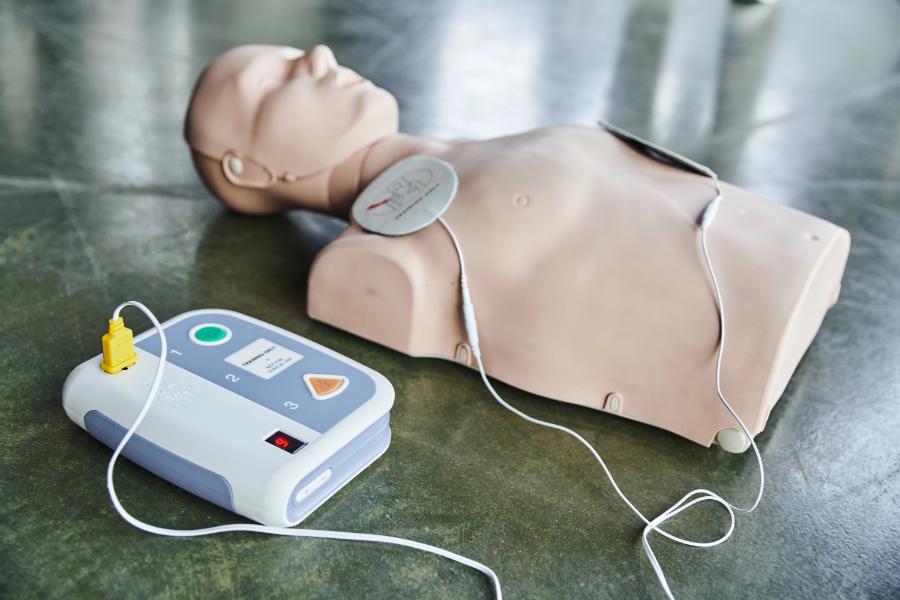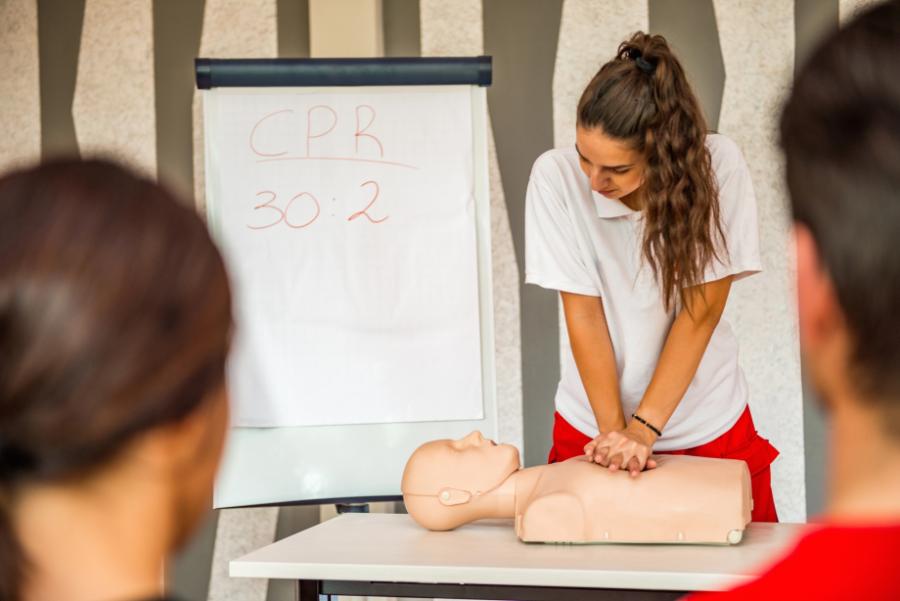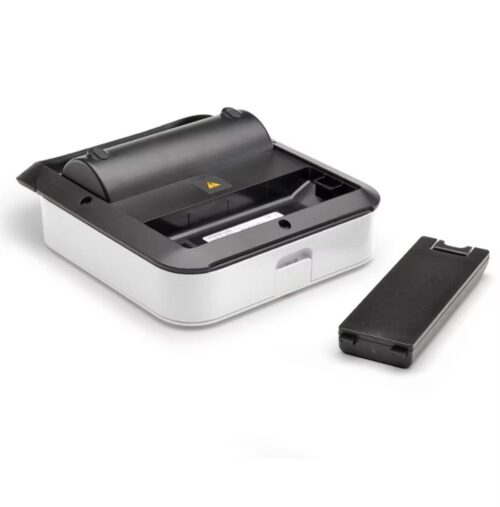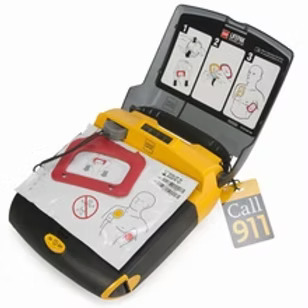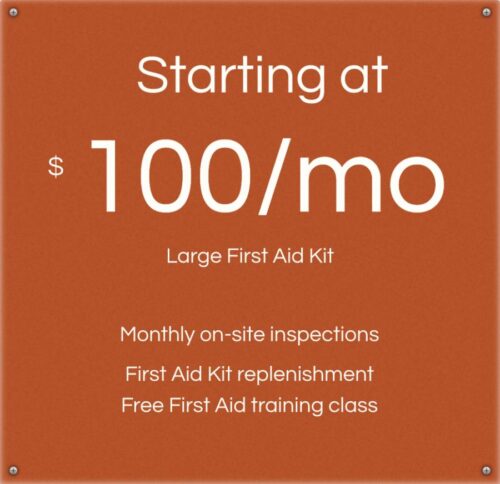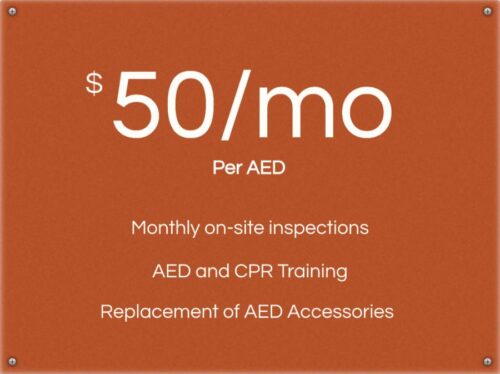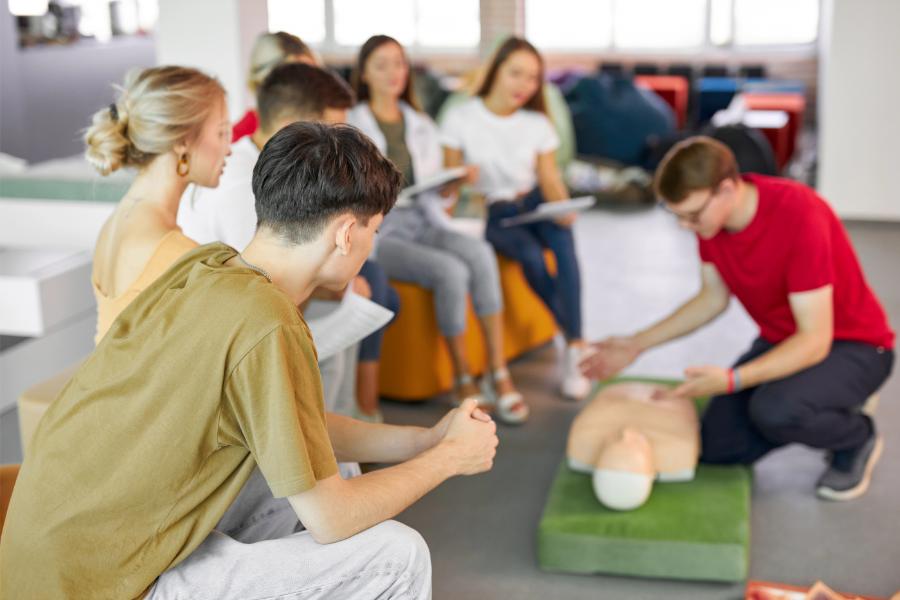
In the face of an emergency, the power to save a life can rest in the hands of those who possess the right knowledge and skills. While many may find themselves as bystanders, frozen by uncertainty or fear, medical training can unlock the potential to become a hero – someone who takes decisive action when it matters most.
The Power of Action: Transforming from Bystander to Hero
Acquiring lifesaving skills like CPR (Cardiopulmonary Resuscitation) and BLS (Basic Life Support) initiates a profound mindset shift, transforming individuals from passive observers into confident first responders capable of intervening effectively during crises. These skills empower everyday people to act decisively in moments where hesitation could cost lives. With the right training, anyone can become a vital link in the chain of survival, offering hope and help when it matters most.
Whether you’re a parent, teacher, student, or simply someone who wants to make a difference, learning CPR and BLS isn’t just about technique—it’s about courage, compassion, and readiness.
Understanding CPR and BLS: What These Skills Entail
At the core of medical preparedness lie two essential techniques: CPR (Cardiopulmonary Resuscitation) and BLS (Basic Life Support). CPR equips individuals with the ability to maintain blood flow and breathing in someone experiencing cardiac arrest. Through a combination of chest compressions and rescue breaths, this lifesaving procedure helps preserve vital oxygen supply to the brain and other organs until advanced medical care arrives. BLS, on the other hand, encompasses a broader range of skills, including CPR, but also covers techniques for managing obstructed airways, assisting with childbirth, and addressing other medical emergencies.
The Importance of Mastering These Skills
By mastering CPR and BLS, individuals gain the power to act swiftly and effectively in situations where every second counts. These skills provide the foundation for maintaining life until professional help arrives, bridging the critical gap between the onset of an emergency and the arrival of emergency medical services.
The Impact of Timely Intervention on Survival Rates
Time is of the essence when it comes to cardiac emergencies. Research has shown that the chances of survival decrease by 7-10% for every minute that passes without CPR or defibrillation. Prompt intervention through CPR and BLS can significantly increase the likelihood of a positive outcome, doubling or even tripling a person’s chances of survival in certain cases.
The Golden Window of Opportunity
The first few minutes following a cardiac arrest are crucial, as the brain and other vital organs begin to suffer from lack of oxygen. By initiating CPR immediately, trained individuals can help preserve these organs and buy precious time until more advanced medical care becomes available, significantly improving the odds of survival and minimizing the risk of long-term complications.
Taking the Leap: Why Medical Training is Accessible to All
Contrary to common misconceptions, acquiring medical skills like CPR and BLS is not an insurmountable task reserved for healthcare professionals. These life-saving techniques are designed to be learned and applied by anyone, regardless of their background or prior experience. With the right training, individuals from all walks of life can become proficient in these essential skills, empowering them to make a difference in emergency situations.
Breaking Down Barriers
Many reputable organizations and training centers offer accessible and convenient courses tailored to different learning styles and schedules. From online self-paced programs to hands-on, instructor-led sessions, there are options to suit every need. This accessibility ensures that no one is left behind when it comes to acquiring these invaluable skills.
A Community of Preparedness: Fostering Collective Safety
Imagine a world where lifesaving knowledge is not confined to a select few but is widely distributed throughout communities. As more individuals in Phoenix, AZ, and beyond embrace medical training, a ripple effect of preparedness begins to take shape. Each trained individual becomes a vital link in a chain of collective safety, enhancing the overall resilience of their neighborhoods, workplaces, and public spaces.
The Power of a Prepared Community
When emergencies strike, the presence of multiple trained individuals can dramatically increase the chances of a positive outcome. With more people equipped to provide immediate assistance, the burden of response is shared, creating a supportive network that can act swiftly and confidently until professional help arrives.
Step-by-Step Guide: Getting Certified in Phoenix, AZ
For those in Phoenix, AZ, eager to embark on their journey towards becoming certified in CPR and BLS, a clear path awaits. Local training centers like LP Health Directions offer comprehensive programs designed to meet the needs of individuals and organizations alike.
Choosing the Right Program
When selecting a training program, consider factors such as course format (online or in-person), duration, and any specific requirements or certifications needed for your profession or personal goals. Many reputable providers offer flexible scheduling options to accommodate various schedules and learning preferences.
The Training Experience
During the training, experienced instructors will guide you through hands-on practice sessions, ensuring you develop the muscle memory and confidence needed to perform CPR and BLS techniques effectively. Additionally, you’ll receive up-to-date information on best practices and guidelines, equipping you with the latest knowledge in the field.
Certification and Renewal
Upon successful completion of the course, you’ll receive official certification recognized by relevant authorities and organizations. These certifications typically have an expiration date, after which renewal training is required to maintain your skills and knowledge. LP Health Directions and other reputable providers offer convenient recertification options to ensure you remain prepared for emergencies.
Overcoming Hesitations: Building Confidence to Act in Emergencies
While the decision to pursue medical training is commendable, many individuals may still harbor doubts and uncertainties about their ability to intervene effectively in emergencies. Fears of making mistakes, legal liabilities, or the emotional toll of high-stress situations can act as barriers to taking action.
Strategies for Building Confidence
To overcome these hesitations, regular practice and refresher sessions are key. Participating in simulations and scenario-based training can help build muscle memory and familiarity with emergency protocols, boosting your confidence to act decisively when needed. Additionally, connecting with a supportive community of fellow trainees can provide a valuable network for sharing experiences, tips, and encouragement.
Beyond the Basics: Expanding Your Medical Skillset
Once you’ve mastered the foundations of CPR and BLS, consider exploring additional medical training opportunities to further enhance your preparedness. Courses in First Aid and AED (Automated External Defibrillator) usage can equip you with a broader range of skills to handle various emergencies, from minor injuries to sudden cardiac events.
Becoming a Well-Rounded Responder
By continuously expanding your medical knowledge and skills, you’ll develop into a well-rounded responder capable of addressing a wide array of situations. This comprehensive approach not only increases your chances of saving lives but also fosters a deeper sense of confidence and resilience in the face of emergencies.
Frequently Asked Questions
As you embark on your journey towards medical training, it’s natural to have questions and concerns. Here are some common queries addressed:
How long is CPR/BLS certification valid?
Certifications typically have a two-year validity period, after which recertification is required to ensure your skills and knowledge remain up-to-date.
Can I be held liable for performing CPR or BLS?
Most regions have Good Samaritan laws that provide legal protection for individuals who provide reasonable assistance during an emergency, as long as they act in good faith and without gross negligence.
What’s the difference between CPR and BLS?
CPR focuses specifically on maintaining blood flow and breathing during cardiac emergencies, while BLS encompasses a broader range of skills for managing various medical emergencies, including CPR.
Is prior medical experience required?
No, CPR and BLS courses are designed for individuals with or without prior medical experience. The training is tailored to equip anyone with the necessary skills and knowledge.
With these answers in mind, you can approach your training with confidence, knowing that your questions and concerns have been addressed, and that you’re taking a significant step towards becoming a lifesaving hero in your community.


